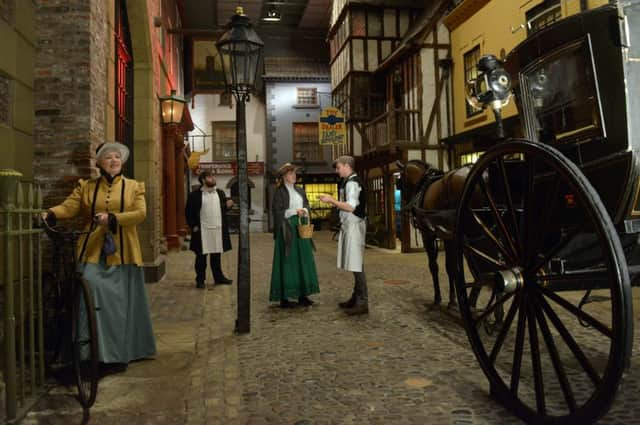Dick Turpin's old haunt in York in line for a makeover


But thanks to the largesse of a doctor from Pickering, just before the war, it was turned into one of the city’s most significant attractions.
Today, with the announcement of a development worth up to £18m, its profile was further in the ascendant.
Advertisement
Hide AdAdvertisement
Hide AdYork Castle Museum, named after the former fortress on whose site it stands, wants to create new buildings, exhibition spaces and a riverside walk through the newly-developed castle gardens and along the medieval walls.
If the Heritage Lottery Fund approves, the project would transform the Castle Green area of the city centre, known as the Eye of York, the museum’s trustees said.
The museum, founded by Dr John Kirk to house his rambling collection of pre-industrial artefacts acquired from his patients in rural North Yorkshire, occupies two former prison buildings, linked by a 1970s structure which the trustees say is no longer fit for purpose. Its most-visited permanent display is Kirkgate, a life-sized recreation of a cobbled, Victorian street, named after its founder. Five years ago it was expanded, with shops based on real examples from the late 19th century.
Another popular exhibit is Dick Turpin’s old cell in the debtors’ and felons’ prison, in which he was incarcerated while the authorities determined whether he was the notorious horse thief or, as he claimed, an impoverished butcher named John Palmer.
Advertisement
Hide AdAdvertisement
Hide AdThe new proposals include a replacement linking building and a second entrance at the north end of the old women’s prison, as well as a new permanent exhibition explaining the history of the Eye of York area and its significance from the time of William the Conqueror.
The chief executive, Reyahn King, said the improvements would give people “a real sense of place”, and an understanding of why York and the castle site was so important to the history of northern England.
She said: “It will be a cultural attraction that will draw people to this part of York, and the improvements will completely uplift the whole area.”
The new museum would also do a better job of explaining its own history, she added. “We recognise that we have underplayed the story of the castle itself,” Ms King said. “We want to tell it from the very beginning, from the Romans, through to the Norman era and the prisons period.
Advertisement
Hide AdAdvertisement
Hide Ad“It’s going to be much more of a must-see, ‘wow’ experience.”
Dr Kirk’s original collection has grown over the years into one of international importance.
“It began with his desire to show all the different ways of life which were being lost, said Ms King, who took over the museum in 2015.
“We now have an important collection of social history items that help you see how ordinary lives become extraordinary from a distance.”
Advertisement
Hide AdAdvertisement
Hide AdThe new proposal is not the first large-scale development on the site. In 2012, the restoration of a Victorian watermill there opened up parts of York’s riverbanks to the public, and in 2014 a new World War One exhibition was created, with £1,1m from the Heritage Lottery fund.
Last year, the museum was named for the first time among the top ten in the UK, based on its online reviews.